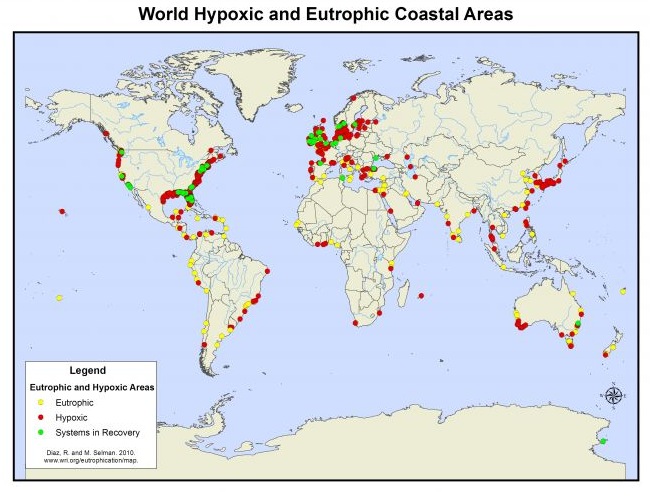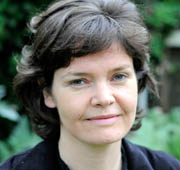Figure 1: The Doughnut: humanity’s sweet spot. Article cross posted from Kate Raworth's Doughnut Economics blog.
Humanity’s central challenge in the 21st century is to meet the human rights of all people within the capacity of Earth’s life-support systems. In other words, we need to get into the doughnut: the safe and just sweet spot between social and planetary boundaries (Fig. 1 above).
So where are we today? Beyond the boundaries on both sides: we have already transgressed at least three planetary boundaries (on climate change, nitrogen use and biodiversity loss), while over one billion people still lack the means to meet their most essential needs (Fig. 2 below).
Figure 2: Beyond the boundaries on both sides: over the environmental ceiling — and under the social foundation.

What will it take to get into the doughnut? Tackling inequality is key – and that means addressing resource inequalities in both consumption and production. Here’s why, in three messages.
1. Getting over the social foundation demands redistributing resource consumption towards the worst off. The good news? This need not be a source of pressure on the planet, as shown in Fig. 3.
- 13 percent of people currently don’t have enough food to eat, according to the United Nations' Food and Agriculture Organization (FAO). What would it take to meet their needs? Around 3 percent of today’s global food supply. Meanwhile, between 30 percent and 50 percent of that global food supply is lost post-harvest, wasted in the supply chain, or thrown away in our kitchens. Ending hunger would take just 10 percent of the food that is not even being eaten.
- 19 percent of people have no access to electricity. According to the International Energy Agency, their basic electricity needs could be met, using a mix of generating sources, with just a 1 percent increase in global CO2 emissions. That’s fantastic news because it means tackling climate change and ending energy poverty are essentially separate challenges.
- What underlies these resource consumption inequalities? Income disparity and purchasing power, of course. 19 percent of people live on less than $1.25 a day. Based on calculations by Brookings researchers, ending this most extreme income poverty would take less than 0.2 percent of global income. Enough said.
Figure 3: Ending poverty – no pressure on the planet

2. Getting back within planetary boundaries calls for reducing total resource consumption, and redistributing it away from the richest.
- According to researchers at Princeton University, around 50 percent of global carbon emissions are produced for the use of just 11 percent of people worldwide — let’s call them the global carbonistas, leading fossil fuel intensive lifestyles on every continent, but predominantly in high-income countries.
- Of the globally sustainable nitrogen budget (35m tonnes per year), 33 percent of that is currently used simply to produce animal feed to meet the demand for meat and dairy in Europe, according to the European Nitrogen Assessment. And if you think that reflects badly on Europe, at least they did the calculations, so now can act on it.
It’s clear that getting within social and planetary boundaries demands a strong reduction in resource consumption by the richest and a significant (but very feasible) redistribution towards the poorest.
3. Getting back within planetary boundaries also calls for addressing the unequal distribution of resource use in production processes.
When Rockstrom and co. produced the first analysis of planetary boundaries in 2009, they put forward a single global estimate for each boundary — such as a maximum of 350 parts per million of CO2 in the atmosphere, or 35m tonnes of reactive nitrogen (used widely in fertilizers) to be released into the atmosphere each year.
For some planetary boundaries, the pressure created is ‘well-mixed’ meaning that it no matter where it is created, it spreads itself evenly — such as greenhouse gases that add to global warming no matter where they are released from. For these, a single global number for the boundary makes clear sense. Other planetary boundary pressures, such as nitrogen and phosphorus use, are not well-mixed but instead are ‘spatially hetergenous’ (let’s call them ‘lumpy’) in that the pressure is most intense close to where it was created.
If you want to know what lumpy pressure on planetary boundaries looks like, check out these two maps showing first the global use of nitrogen fertilizers, and then global distribution of eutrophication and hypoxia, due to excessive nitrogen and phosphorus, causing algal blooms which deprive aquatic life of oxygen. It’s clear (fig 4a) that nitrogen fertilizer use is very unevenly distributed, and excessively intensive in regional hotspots (in red). And these excesses map closely to the coastal areas suffering the most intensive damage (fig 4b).
Figures 4a: world nitrogen fertilizer use – and 4b: world hypoxic and eutrophic coastal areas.


It appears that for nitrogen, and many other ‘lumpy’ planetary boundary pressures — such as phosphorus use, land use change, biodiversity loss, chemical pollution and water withdrawals — the global distribution of pressure matters, as well as the total. More evenly distributed pressure may reduce total pressure at the global scale, as well as reducing the risk of local ecosystem collapse. Indeed, two Earth-system scientists, Will Steffen and Mark Stafford Smith pointed out in a 2013 paper that this means, “It may well be in the self-interest of wealthy nations to achieve a more spatially equitable world in terms of access to resources and ecosystem services.”
What’s more, when the next iteration of the planetary boundaries framework is published (hopefully not long to wait…), it will propose not only global boundary levels but regional ones too, so bringing more attention to the overall distribution of humanity’s pressure on the planet.
From these three perspectives, one thing is clear. We cannot get into the doughnut’s safe and just space without tackling the distribution of global resource use in both consumption and production. Put simply, if we want to get into the doughnut, then we’ve got to tackle inequality.
All data and references (unless otherwise provided here) can be found in Raworth, K. (2012) A safe and just space for humanity: can we live within the doughnut?









